ESG / CSR
Industries
Why We Should Preserve the Grand Canyon
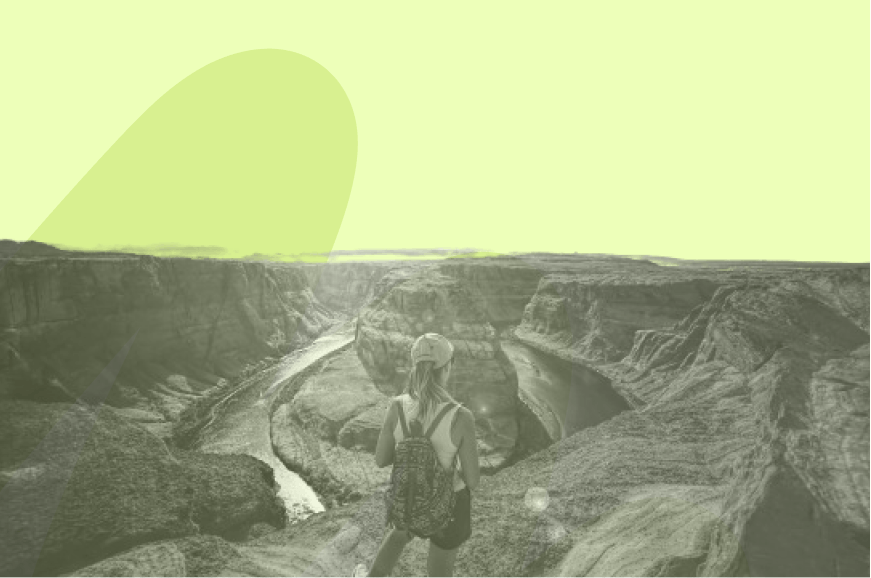


- The history and importance behind the Grand Canyon
- How climate change threatens tourism, community, and biodiversity surrounding the Grand Canyon
- Efforts already made to protect the Grand Canyon and how to safeguard this beloved National Park moving forward
When most of us think of the Grand Canyon, we think of long hikes, jaw-dropping views, and endless red rocks stuck to the bottom of our shoes – ultimately, making Grand Canyon National Park a tourist attraction for domestic and international tourists alike.
However, the Grand Canyon (ironically, due to its vast size in nature) is more than meets the eye – to the extent that Biden announced a new Grand Canyon National Monument to protect the site, its biodiversity, and locals that live in the surrounding areas in the southwestern United States.
In this article, we’ll explore why the Grand Canyon is important, its history, and why Biden took action to protect this well-known tourist attraction in the Grand Canyon Region.
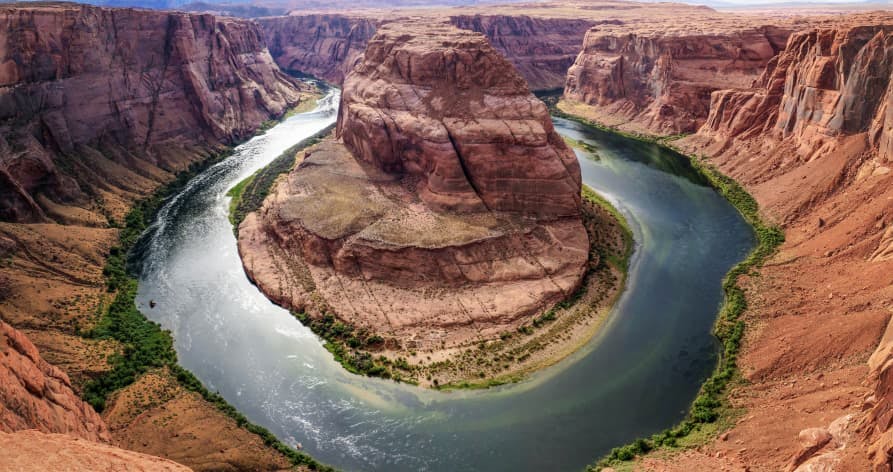
What is the Grand Canyon?
The Grand Canyon is a gorge one-mile deep in northern Arizona, which is estimated to have formed around 5 to 6 million years ago when the Colorado River started cutting through layers of rock – contributing to erosion which ultimately makes up the Grand Canyon we know and love today.
The Grand Canyon was first discovered back in the 1500s when Spanish explorers first found it after traveling north from Mexico City. However, it wasn't until John Wesley Powell explored the Grand Canyon via the Colorado plateau that it began to receive worldwide recognition.
The Grand Canyon officially became a National Park in the United States in 1919, and since then – receives around 5 million visitors every year.
Spanning a massive 270 miles long and 18 miles deep, the Grand Canyon is one of the biggest canyons on the planet – with some of the other largest canyons in the world being Copper Canyon in Mexico, Colca Canyon in Peru, and Fish River Canyon in Namibia.
The Grand Canyon, while mostly remaining a massive stamp of mother nature’s work – is most commonly known for its tourist attractions as a National Park Service, where many visit to hike around either side of the Grand Canyon village (such as the North Rim South Rim Trails) and learn about its geological history.
The overview cards below will reveal some of the many things that tourists can do in the Grand Canyon area:
Is the Grand Canyon the Biggest or Deepest Canyon in the World?
No, the Grand Canyon is not the biggest canyon in the world – as it is only one mile deep despite it's long length spanning 270 miles from southwest of Lake Powell to the Grand Wash Cliffs, or east of Lake Mead. Ultimately, the Grand Canyon is considered the longest canyon in the world – but it isn't the biggest, as Yarlung Tsangpo Grand Canyon takes that title with it's deepest point being almost 20,000 feet (6,000 meters) deep.
Although the Grand Canyon may not officially be the largest or deepest canyon in the world – it's canyon walls, Glen Canyon Dam,
The drop down sections will reveal some of the most interesting places to learn about or even visit when taking a trip to the Grand Canyon:
Where Are the Best Views at the Grand Canyon?
The best viewing points at Grand Canyon National Park include Moran Point, Yavapai point, and Mather point – all of which can providing sweeping, stunning views of the Grand Canyon.
The flip cards (move cursor over card to flip) to discover the differences between some of the most well-known viewpoints at the Grand Canyon:
What Animals Can Be Found at the Grand Canyon?
Several animals can be found at the Grand Canyon, including Bighorn Sheep, the California Condor, and even Mountain Lions.
The overview cards below will reveal some of the several major ecosystems, animal species, and great biological diversity you may stumble across when you explore the grand canyon:
Why is the Grand Canyon Important?
Unbeknownst to most, the Grand Canyon is more than a hiking trail or typical visit to a National Park. The Grand Canyon is important as the Grand Canyon boasts indispensable human history, science, and American culture – such as in art, tourism, and even the Earth's geological history.
The Grand Canyon is a beautiful place that many people would like to make sure isn’t tampered with in the midst of climate change, but besides tourism – the Grand Canyon is essential for many other reasons.
Culture & Local Communities in the Grand Canyon Area
For instance, there is a deep culture ingrained with the Grand Canyon – with many Native American tribes having profound ties to the Grand Canyon and having lived there for ages. Many of these tribes view the Grand Canyon and the Colorado River as a deeply spiritual place, with many ancient stories still being passed down within these native tribes today.
Currently, there are still 6 main tribes that live around the Grand Canyon – the Hualapai Tribe, Havasupa Tribe, Navajo Nation, Paiute Tribe, Hopi Tribe, and Zuni Tribe.
The summary cards below will explain how these life zones and tribes represented in the Grand Canyon remain connected the region in present day:
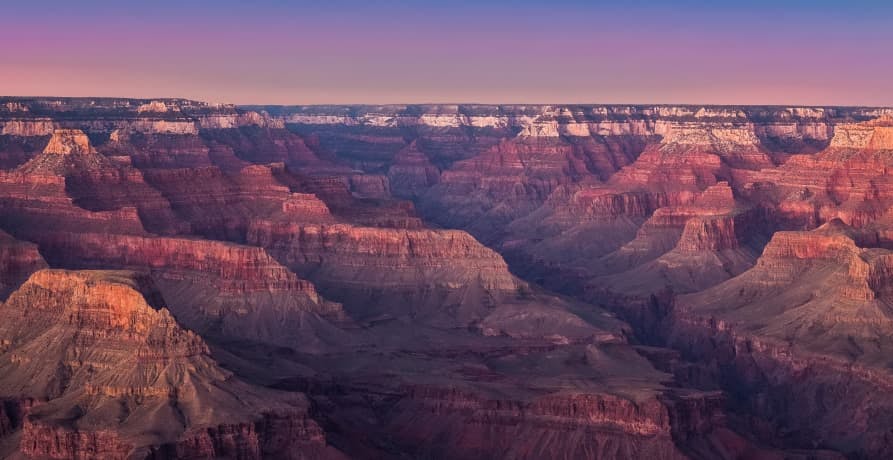
In addition to the spiritual component of the Grand Canyon valued by native tribes and tourists who discover their history surrounding the canyon alike, the Grand Canyon is also imperative for biodiversity.
Biodiversity in Grand Canyon Region
Here are three examples of indispensable forests, rivers, and woodlands that the Grand Canyon relies on to stimulate its biodiversity and support the livelihood of its wildlife.
Boreal and Ponderosa Pine Forests
Winter in the Grand Canyon means more snow and colder temperatures, but pine, spruce, fir, and aspen from the trees in the Boreal and Ponderosa forests help to provide deer and squirrels with leaves and seeds, and lions with prey.
Pinyon-Juniper Woodland
Juniper and pinyon pine trees are perfect for both warm sunny temperatures and frigid winters with lots of snow – making this area of the Grand Canyon a year-round essential for various birds that rely on the nuts and berries from these trees all year, no matter the season.
Riparian
Riparian ecosystems are essential for both plants and animals that require a lot of water to survive – like cottonwood trees and frogs. These ecosystems are often found along the sides of creeks, springs, and even the Colorado River itself.
The three way battle cards below will compare and contrast these areas in the Grand Canyon National Park:
American History
The Grand Canyon is more than a spiritual place for native tribes and an imperative ecosystem, but the Grand Canyon serves as a piece of American History and ultimately – a historical landmark. This is because despite the fact that upon its first discovery, people tried to come up with ways to market the Grand Canyon to be financially lucrative, the Grand Canyon has been left mostly untouched and unharmed.
Much of the reason for this is because one of the presidents of the United States, Teddy Roosevelt, visited the Grand Canyon early on and made his admiration for the canyon known.
Following his visit and statement, Teddy Roosevelt made the decision to make the Grand Canyon a national monument and National Park we visit today – ensuring lodges were torn down and that the Grand Canyon could remain in its natural state.


Grand Canyon National Park Boosts the Local Economy
Lastly, the Grand Canyon serves as a valuable resource for Arizona’s local economy and geologists. In fact, According to the National Park Service, tourism to the Grand Canyon National Park brought in a whopping $768 million to local economy in 2023 alone – trends that are only bounds to increase as road trips and travel continue to skyrocket post pandemic.
Ultimately, the Grand Canyon serves as many things to many different people – but has climate change made it harder for the Grand Canyon to provide what everyone needs from it?
Lastly, the Grand Canyon serves as a valuable resource for Arizona’s economy and geologists. Ultimately, the Grand Canyon serves as many things to many different people – but has climate change made it harder for the Grand Canyon to provide what everyone needs from it?
How Has Climate Change Affected the Grand Canyon?
Unsurprisingly, climate change has made much of the Grand Canyon difficult to hike, with many advisories for tourists planning to hike the Grand Canyon to try and avoid the Inner Canyon when there are extreme highs.
Even if people do decide to hike during off peak hours (anytime that isn’t between 10AM and 4PM), the National Park recommends people bring water, salty snacks that won’t spoil easily to prevent you from sweating to much and provide the body with electrolytes, sunglasses and sunscreen for protection from UV-B rays, and to wear loose clothing to prevent the potential effects of a heat stroke.
The overview cards below will summarize these points on how to stay safe when visiting the Grand Canyon in the midst of climate change:
Is the Majority of Tourism in Arizona For the Grand Canyon?
Yes, much of Arizona (besides visiting Glendale for Taylor Swift’s opening night of the Eras tour in 2023) attracts tourism solely for the Grand Canyon.
In fact, according to the Arizona Office of Tourism, a whopping 3 out of 5 first-time visitors to the state went to Grand Canyon National Park between September 2003 and August 2004.
Did you know? Arizona is nicknamed and often penned as the Grand Canyon State!
Economic Impact on Grand Canyon & Climate Change
In 2022, the Grand Canyon helped to provide nearly 180,000 jobs and almost $4 billion in tax revenue. However, with soaring temperatures and the increased interest to conduct mining projects at the Grand Canyon – some of this vital tourism could be threatened, or at the very least would be likely to decrease.
Dwindling tourism isn’t even the least of our worries when it comes to protecting the Grand Canyon from the effects of climate change. Increasingly high temperatures continue to threaten the water springs surrounding the Grand Canyon, which are pivotal to supporting biodiversity and helping to sustain the wildlife across the National Park.
Droughts aren’t the only culprit of this newfound threat, but contamination from drilling or mining in the Grand Canyon could harm the natural sources of water found in the surrounding areas of the canyon – not only threatening wildlife, but the indigenous communities that still live there.
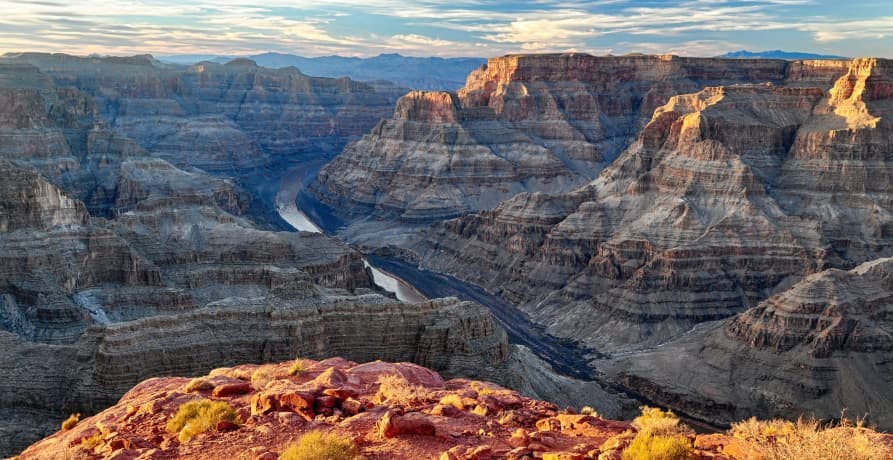
How Did Biden Help to Protect the Grand Canyon?
In August 2023, Biden traveled to Arizona soon to announce a new national monument which would prohibit uranium mining, one of the greatest threats to the Grand Canyon, which is something native tribes in the Grand Canyon have hoped would happen for ages.
Ultimately, a uranium mining project around the Grand Canyon would actually do more harm than good to the economy – seeing as so many jobs and tax revenue are generated in Arizona from the Grand Canyon alone.
In addition to this, a uranium mining project at the Grand Canyon would mean forcing the United States to import the metal necessary for the mining – another emission intensive process that wouldn’t do the environment any favors.
New Grand Canyon National Monument
One of the hopes of Biden passing this new national monument is to continue to convey the message that the Biden administration is not in support of mining projects – with many Environmental advocates in support of this possible announcement to further protect the Grand Canyon.
The new national monument will not only help to save tourism and Arizona from financial peril, but it can help to prevent water contamination in the water resources used by wildlife and native tribes that dwell in the Grand Canyon.
Is preserving the Grand Canyon entirely up to legislative action, or is there something the average person can do as well?
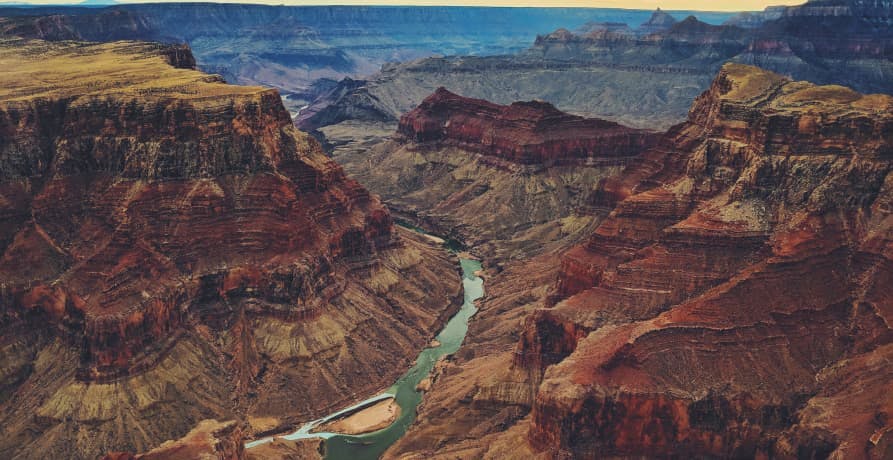
How Can We Preserve the Grand Canyon When Visiting the National Park in Arizona?
The Grand Canyon is viewed as one of the most eye-dropping and stunning National Parks in the United States, and even the world – but if you’re thinking about taking a trip there, here are a few things to keep in mind during your visit to make sure you’re helping to preserve the nature and integrity of the Grand Canyon.
As a whole, much of the protection for the Grand Canyon must come from government legislation like Biden’s upcoming plan to prevent future mining projects from occurring in the area – but the things a general tourist can do to help preserve the Grand Canyon shouldn’t be overlooked.
How to Protect Grand Canyon National Park
Here a few ways to make sure your doing your part to protect the Grand Canyon during your next trip:
- Stay on the Official Hiking Trail: It can be tempting to take the off-beat path, but when hiking the Grand Canyon – it’s important to know that the hiking trails are there for a reason. Going on an undesignated hiking trail could disrupt ecosystems and even cause damage.
- Dispose of Trash Outside the Park: It’s smart to bring snacks and water on your hike to the Grand Canyon, but not to dispose of it during your hike. Do like the Japanese, here: dispose of your trash once you exit the park or get back home.
- Be A Responsible Camper: As the rim to rim hike of the Grand Canyon is almost 24 miles long, many people opt to camp before finishing the whole thing – therefore, it’s important to follow “Leave No Trace” values while camping to avoid a potential wildfire.
- Respect Wildlife: Make sure to keep quiet while camping and to not feed any outside food to surrounding wildlife to not disrupt their ordinary lives.
- Don’t Collect Souvenirs in the Park: Similar to how you shouldn’t take a shell from a beach, it’s best to leave whatever you found in the park in the park. What you see in the canyon, should stay in the canyon.
- Use Sustainable Transportation: Opt to take shuttle services to and from the National Park to help prevent increased traffic near the Grand Canyon.
- Donate & Volunteer: Any donation or time you can offer can help to preserve the Grand Canyon.
- Follow All Park Rules: It’s important to stick to all the posted regulations and guidelines while in the park, as many of them are to directly protect the surrounding areas, wildlife, and tribes in the Grand Canyon.
Ultimately, the Grand Canyon remains one of the most beautiful natural wonders of the United States – but we have to put in the effort to make sure it stays that way, and Biden’s support is a good way to get the word out on the importance of preserving the Grand Canyon and other National Parks moving forward.
What About Greenly?
If reading this article about preserving the Grand Canyon in the U.S. and the national monument that Biden has added to the Grand Canyon has made you interested in reducing your carbon emissions to further fight against climate change – Greenly can help you!
Working to protect large bodies of natural land such as the Grand Canyon can be a difficult task in the same way it's hard to manage the effects a large business has on climate change, but don’t worry – Greenly is here to help. Click here to schedule a demo to see how Greenly can help you find ways to improve energy efficiency and decrease the dependency on fossil fuels in your own company.
Greenly can help you make an environmental change for the better, starting with a carbon footprint assessment to know how much carbon emissions your company produces.







